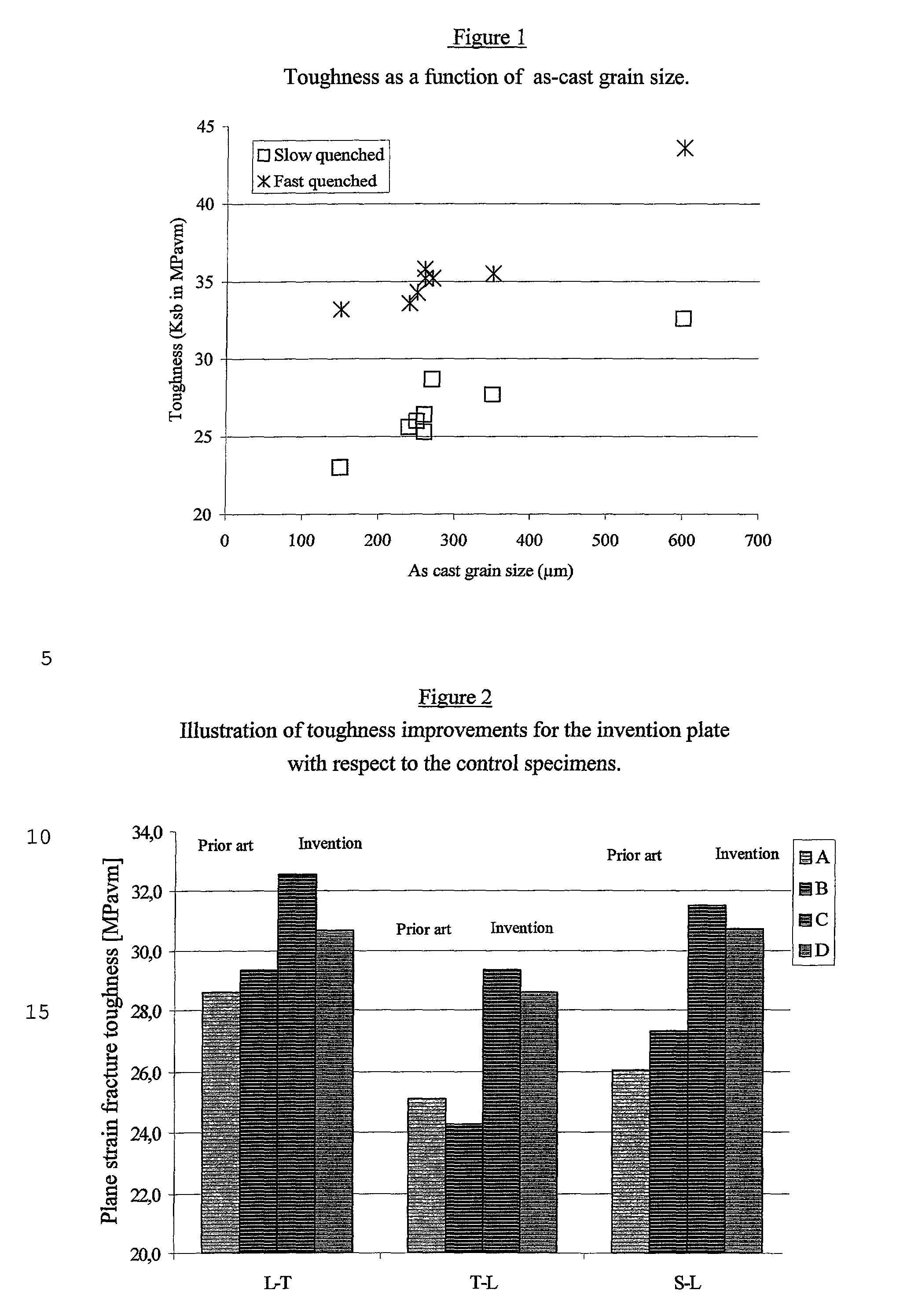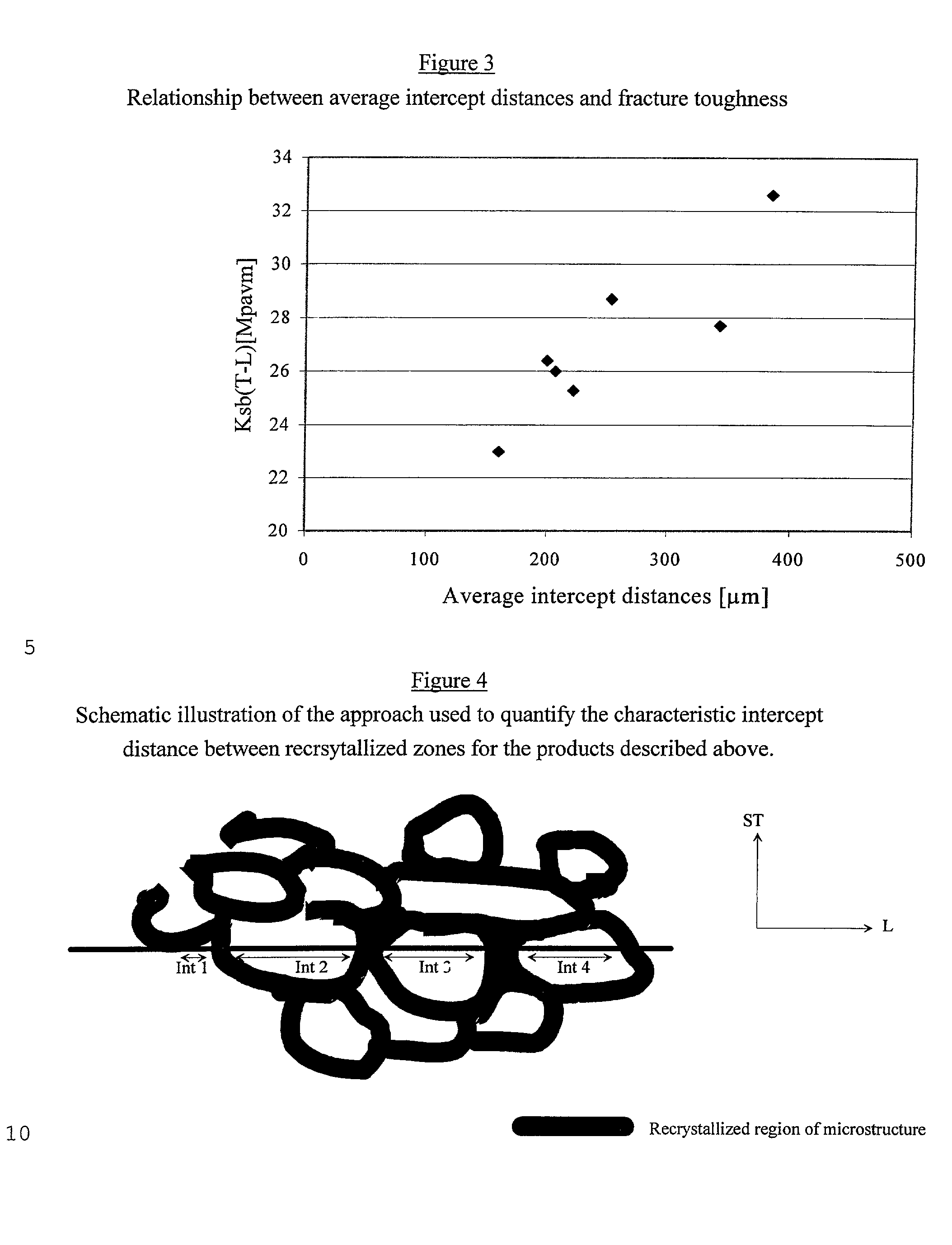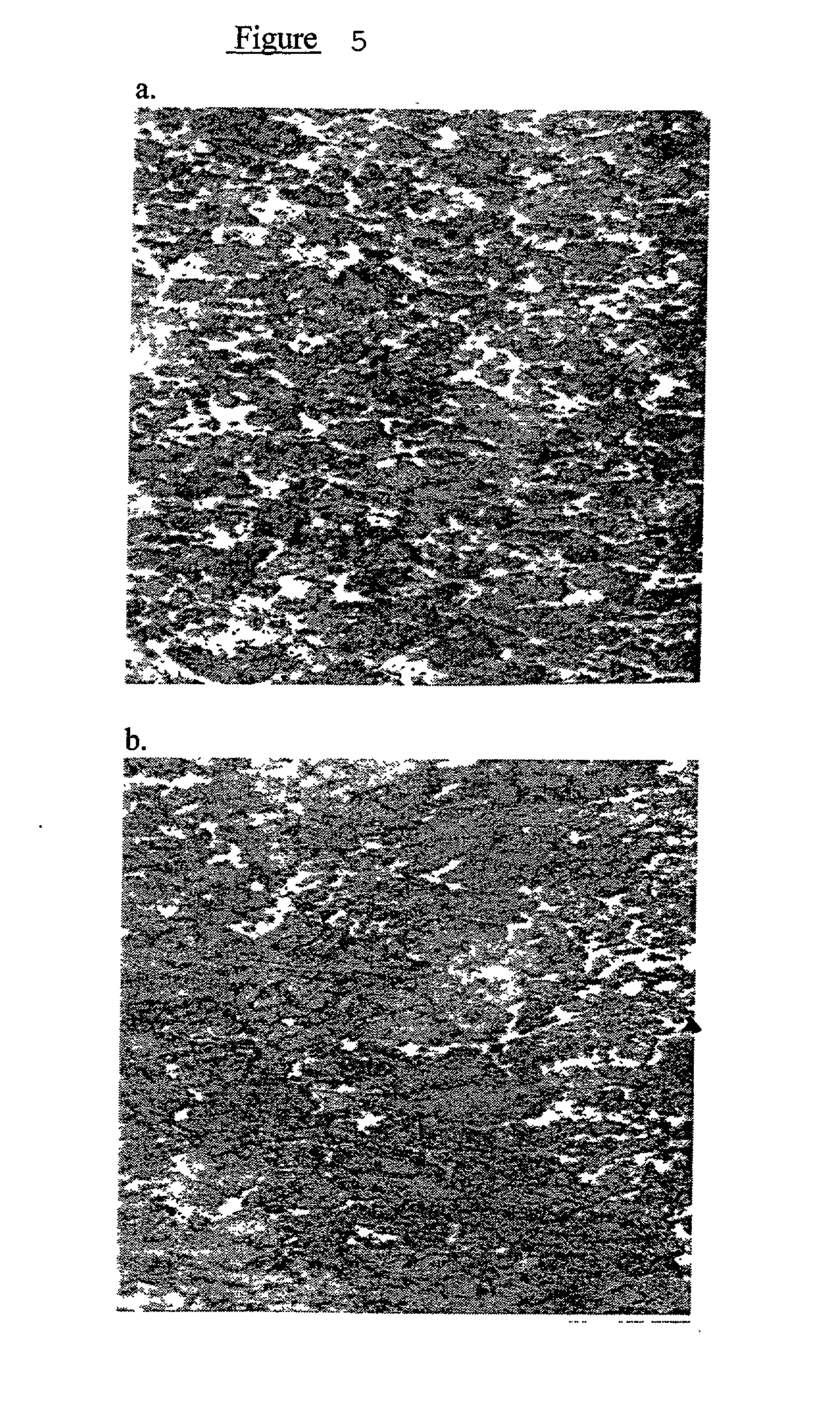Thick products made of heat-treatable aluminum alloy with improved toughness and process for manufacturing these products
a technology of aluminum alloy and thick products, which is applied in the field of heat-treating aluminum alloy products, can solve the problems of product failure mode, unacceptable large grain size, and general reduction of toughness of rolled products made of a given alloy 2000 or 7000,
- Summary
- Abstract
- Description
- Claims
- Application Information
AI Technical Summary
Problems solved by technology
Method used
Image
Examples
example 1
[0041] Ingots of cross section 500 mm.times.1600 mm made of AA7050 alloy with the position given in table 1 were cast:
1TABLE 1 Chemical composition of alloys Refine- Zn Mg Cu Si Fe Zr Ti B ment No % % % % % % .mu.g / g .mu.g / g kg / t 1 6.03 1.99 2.12 0.027 0.06 0.11 60 5.3 0.5 2 6.08 2.10 2.11 0.025 0.06 0.11 152 2.1 0.5 3 6.10 2.12 2.22 0.028 0.06 0.11 315 2.0 0.1 4 6.10 2.12 2.22 0.026 0.06 0.11 335 5.1 0.5 5 6.22 2.07 2.17 0.027 0.06 0.11 101 2.0 0.5 6 6.17 2.05 2.22 0.029 0.06 0.11 140 5.0 0.5 7 5.96 2.01 2.17 0.030 0.06 0.08 123 3.3 0.1 8 5.99 2.08 2.20 0.026 0.06 0.11 189 2.0 0.1
[0042] Refining was done using AT5B rod, except for casting 6 which was refined with AT3B rod.
[0043] Samples were taken from the as-cast ingots at a quarter of the thickness and a third of the width for measuring the grain size, and test pieces were taken from the same location and were homogenized at 478.degree. C. for 20 h, with a heat-up in 12 h. test pieces were hot worked at 430.degree. C. They were q...
example 2
[0045] Two industrial-scale casts of ingots of dimension 500 mm (ST).times.1600 mm (LT).times.3000 mm (L) of 7050 alloy were performed: the first corresponding to a control specimen, the second to a composition according to the present invention. These casts were practically identical except for the refining practices, which were in both cases by addition of 0.5 kg / t of AT5B rod, but for plates A and B into an alloy containing a total of 0.0326% Ti, plates C and D a total of 0.0138% Ti.
[0046] From each of these two casts, two ingots were selected for transformation to 152 mm (6") employing an identical standard plate fabrication route, including homogenization, pre-heating, hot rolling, solution heat treatment and cold water quenching, stretching, and aging to the T7451 condition.
[0047] The compositions and mechanical properties of plates A and B (prior art) and C and D (invention) are presented as tables 3 and 4 respectively. Plain strain fracture toughness was determined according...
example 3
Image Analysis of Recrystallized Structures
[0050] The distribution of recrystallized zones in wrought products according to the present invention is characteristically different from that in classical 7050 thick products. As can be observed in FIG. 5 (obtained from test piece number 5 in Table 2), the characteristic distance between recrystallized regions of the invention product is significantly larger than that of prior art (test piece number 4 in Table 2). This can be quantified by image analysis of etched L-ST micrographs. Any etch that generates contrast in the unrecrystallized regions can be exploited (e.g. chromic etch, Keller's etch). The approach used is described schematically in FIG. 4. For lines randomly placed in the L-direction of a micrograph obtained in the L-ST plane, individual intercept distances between recrystallized regions are measured (see intercept 1, intercept 2, intercept 3, intercept 4 in FIG. 4). A stable and representative mean of such intercepts is obt...
PUM
| Property | Measurement | Unit |
|---|---|---|
| Length | aaaaa | aaaaa |
| Percent by mass | aaaaa | aaaaa |
| Percent by mass | aaaaa | aaaaa |
Abstract
Description
Claims
Application Information
 Login to View More
Login to View More - R&D
- Intellectual Property
- Life Sciences
- Materials
- Tech Scout
- Unparalleled Data Quality
- Higher Quality Content
- 60% Fewer Hallucinations
Browse by: Latest US Patents, China's latest patents, Technical Efficacy Thesaurus, Application Domain, Technology Topic, Popular Technical Reports.
© 2025 PatSnap. All rights reserved.Legal|Privacy policy|Modern Slavery Act Transparency Statement|Sitemap|About US| Contact US: help@patsnap.com



